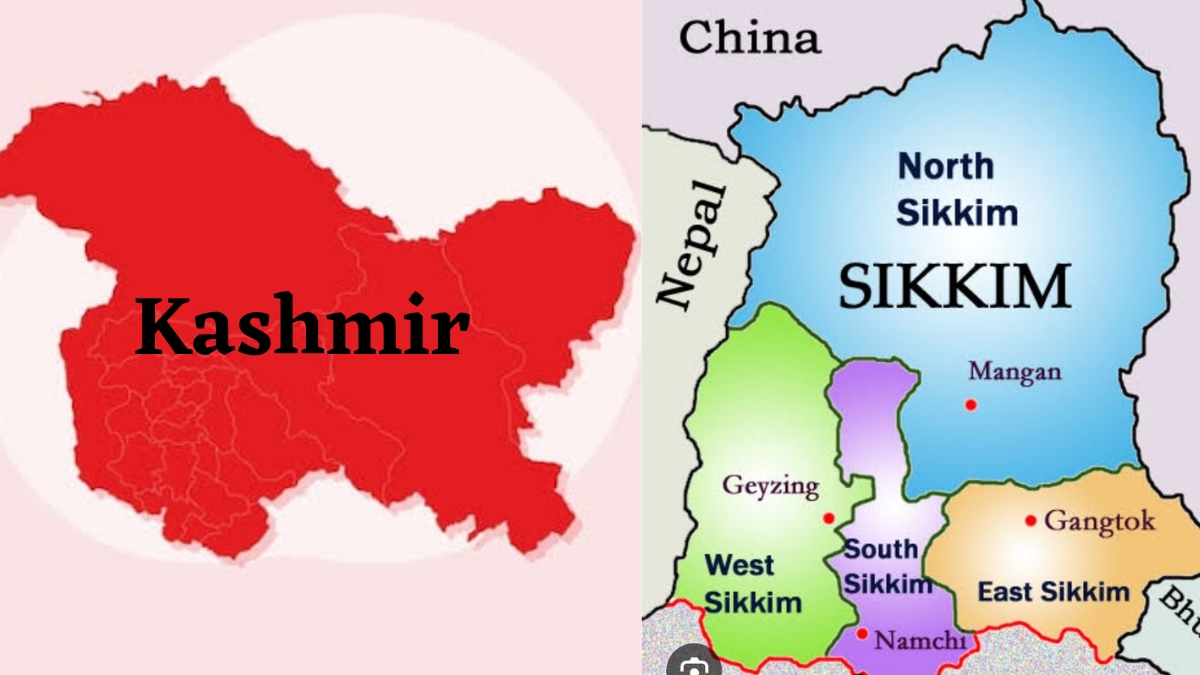Deep Dive: 10 Regions That Were Once Independent Nations
History has shaped nations in fascinating ways, with many regions once standing as independent entities before merging into larger political states. Wars, treaties, invasions, and political agreements have all played a role in shaping the borders of today’s world.
Here’s a closer look at 10 regions that were once independent nations, their unique histories, and how they came to be absorbed into larger entities.
01. Jammu & Kashmir – A Princely State That Chose India
Before 1947, Jammu and Kashmir was a princely state ruled by Maharaja Hari Singh. Initially, he wanted to keep Kashmir independent, maintaining autonomy rather than joining India or Pakistan. However, following the Pakistan-backed tribal invasion in 1947, Hari Singh sought help from India and signed the Instrument of Accession, integrating Kashmir into India. Under Article 370, the region had special status within India until 2019, when the provision was revoked, making Jammu & Kashmir and Ladakh separate Union Territories. The territorial dispute between India and Pakistan continues, making Kashmir one of the most geopolitically sensitive regions in the world.
From a princely state to a region in turmoil, Kashmir remains central to global discussions on autonomy and identity.
02. Sikkim – The Last Himalayan Kingdom Before Joining India
Sikkim was an independent Himalayan kingdom until 1975, when it officially joined India. Ruled by Palden Thondup Namgyal, Sikkim enjoyed self-rule but faced political instability. The growing strategic importance of Sikkim prompted India to conduct a referendum, where the majority voted to merge with India. Today, Sikkim is India’s 22nd state, known for its breathtaking landscapes, Buddhist monasteries, and sustainable tourism initiatives.
From an independent monarchy to a peaceful Indian state, Sikkim’s transition was swift but remains historically significant.
03. Balochistan – A Struggle for Independence That Continues
Balochistan declared independence in 1947 after British withdrawal, but Pakistan quickly annexed the region through military force. Baloch nationalists have continued to demand autonomy or independence, often clashing with Pakistani authorities. The Baloch Liberation Army (BLA) remains active, calling for global support in its fight against Pakistani control. Balochistan’s rich natural resources and strategic position make it a contested region, adding to ongoing tensions.
Balochistan’s independence was short-lived, but the desire for autonomy remains strong.
04. Tibet – A Peaceful Buddhist Nation Turned Chinese Territory
Tibet was an independent country until 1950, when China invaded and took control. The Dalai Lama and Tibetan leaders were forced into exile, with Tibetans still considering themselves under occupation. China claimed that Tibet’s incorporation was a “liberation”, despite global protests against its annexation. Tibetan culture and religious freedoms have been challenged under Chinese rule, leading to ongoing debates about sovereignty and independence.
Tibet remains one of the world’s most controversial territorial disputes, with Tibetan activists fighting for self-rule.
05. Scotland – A Kingdom That Merged with England
Scotland was an independent kingdom until 1707, when it joined England through the Act of Union. Economic pressures and strategic concerns led to the creation of the United Kingdom (UK). While part of the UK, Scotland has its own parliament, overseeing certain laws independently. The Scottish independence movement remains active, with periodic calls for a second independence referendum.
Scotland may be part of the UK, but its identity as a proud and historic nation remains intact.
06. Texas – A Former Republic Before Joining the USA
Texas was an independent country, known as the Republic of Texas, from 1836 to 1845. After gaining independence from Mexico, Texas initially resisted joining the United States. However, military threats and economic instability pushed Texas to merge with the US. Today, Texas is one of the largest and most influential states in America, but its independent spirit still thrives.
Texan pride runs deep, with many residents still celebrating its history as a once-sovereign republic.
07. Hawaii – A Kingdom Overthrown & Annexed by the USA
Hawaii was an independent kingdom until 1893, when American businessmen staged a coup. The monarchy was overthrown, and Hawaii was annexed by the United States in 1898. Hawaii officially became a US state in 1959, but many Native Hawaiians still advocate for sovereignty. The impact of colonization remains a topic of debate in Hawaii’s political landscape.
Hawaii’s unique history as a once-sovereign kingdom makes it stand out among American states.
08. Prussia – A Powerful European Kingdom That Disappeared
Prussia was once one of the strongest European kingdoms, playing a major role in shaping Germany. After World War I, Prussia’s influence weakened, and it officially dissolved after World War II. Its territories were split between Germany, Poland, and Russia. Despite its disappearance, Prussia’s historical impact remains significant in European history.
Prussia’s legacy endures, even though it no longer exists as a nation.
09. Venetian Republic – A Maritime Empire That Lost Independence
The Venetian Republic was an independent maritime power from the 7th century until 1797. Napoleon conquered Venice, marking the end of its long-standing sovereignty. Later, Venice was absorbed into Austria before becoming part of modern Italy in the 19th century. Venice remains a major global tourist destination, known for its canals and unique architecture.
Though no longer independent, Venice’s history as a powerful maritime state continues to shine.
10. Yugoslavia – A Balkan Nation That Split Apart
Yugoslavia was a country formed after World War I, uniting several Balkan states. In the 1990s, ethnic tensions and civil war led to the breakup of Yugoslavia. Today, it exists as multiple countries, including Serbia, Croatia, Bosnia, Slovenia, Montenegro, and North Macedonia. The impact of Yugoslavia’s dissolution still affects political relations in the Balkans.
From a unified country to divided states, Yugoslavia’s history is a lesson in geopolitical shifts.
Final Thoughts – The Changing Borders of Our World
History is full of nations that once stood alone but eventually merged into larger entities due to political shifts, conflicts, and economic pressures.
These stories remind us how fluid national borders can be and how cultural identities endure beyond official sovereignty.
Which former nation fascinates you the most? Let’s explore its unique legacy together!




